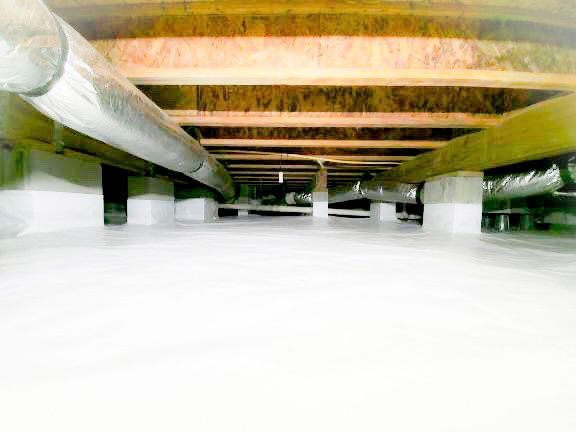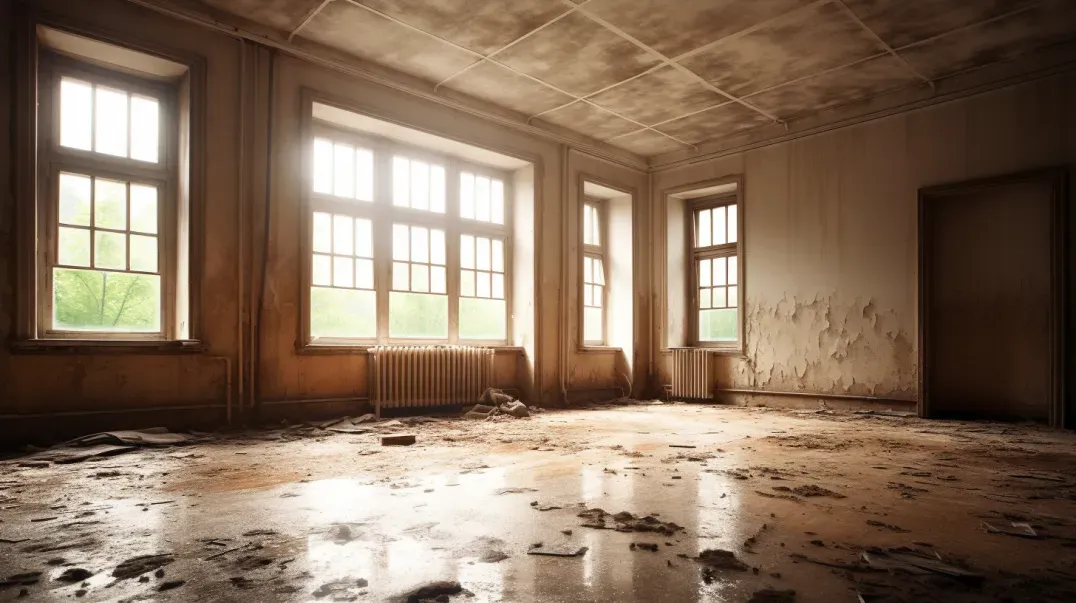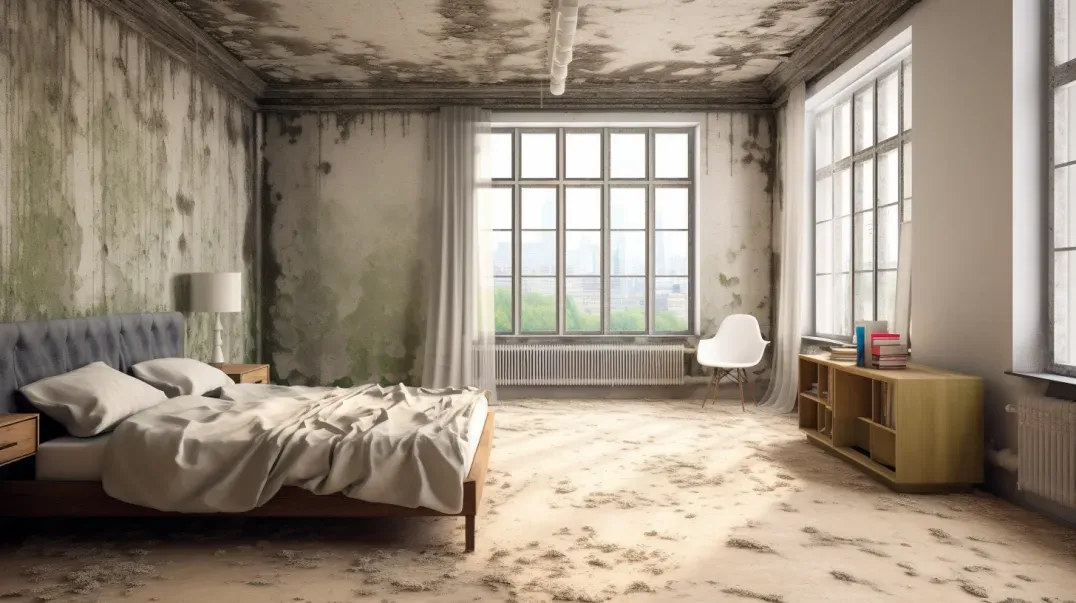Step-by-Step Process of Professional Mold Remediation
Mold—a silent invader that threatens the sanctity of our indoor environments and the structural integrity of our buildings. Professional mold remediation is not just a service; it's an essential practice that ensures the health and longevity of our living and working spaces. This blog explores the critical importance of engaging professionals in mold remediation to maintain superior indoor air quality and preserve the structural integrity of our buildings.
Like engaging with a complex text, addressing mold involves delving deep beneath the surface to understand and mitigate its impact comprehensively. Just as students are taught to annotate texts to draw deeper meanings and connections, professional remediation experts approach mold with a similar depth—analyzing its causes, understanding its environment, and applying specialized knowledge to eradicate it effectively. This process is crucial, not just for the immediate improvement of air quality but for ensuring the long-term health and safety of occupants and the durability of our buildings.
Join us as we dissect the roles of mold remediation experts, the tools they use, and the significant benefits of their work—not only in resolving immediate health concerns but in fostering an environment where safety, cleanliness, and sustainability are paramount. Like a well-annotated text, a professionally remediated building reveals layers of care, expertise, and foresight, ensuring that the spaces we inhabit are not only safe but conducive to our well-being and productivity.
Initial Assessment and Inspection
Professional mold remediation begins with a thorough initial assessment and inspection, akin to the way a diligent reader might scrutinize a complex text to understand its themes and narratives. This crucial first step lays the groundwork for effective intervention, ensuring that the remediation process addresses both the symptoms and sources of mold growth.
Identifying the Source of Moisture
Just as a student annotates a text to uncover deeper meanings and connections, professionals in mold remediation start by identifying the underlying sources of moisture that facilitate mold growth. Recognizing these moisture sources is essential—not merely to remediate the current mold issue but to prevent its recurrence, ensuring the building's long-term health and structural integrity.
Techniques Used by Professionals:
Professionals utilize advanced tools to detect hidden moisture sources, reminiscent of how literary scholars use critical tools to analyze texts. Techniques include:
- Moisture Meters: These devices measure the moisture content in various building materials, pinpointing areas susceptible to mold growth.
- Infrared Cameras: Thermal imaging allows professionals to visualize moisture behind walls and under floors without intrusive methods, similar to how a reader might infer themes from a narrative’s subtext.
Assessing Mold Spread and Damage
Understanding the extent of mold spread and damage is crucial, much like how an in-depth textual analysis helps uncover the full implications of a literary work. This assessment informs the scale and specifics of the remediation strategy.
Methods for Determining Extent of Contamination:
- Visual Inspections: Much like a detailed reading of a text, visual inspections allow technicians to assess the visible signs of mold growth.
- Sampling: Air, surface, and bulk samples might be collected to evaluate the concentration of mold spores, akin to extracting key quotes from a text to support an analysis.
Safety Precautions During Inspection:
Ensuring the safety of both technicians and occupants during the inspection is paramount. Professionals employ several safety measures:
- Personal Protective Equipment (PPE): Technicians wear protective gear such as gloves, masks, and goggles, ensuring their safety while preventing cross-contamination.
- Containment Procedures: Similar to setting boundaries in a critical discussion to focus on specific themes, containment procedures prevent the spread of mold to uncontaminated areas during the inspection process.
Preparation for Remediation
The preparation phase of mold remediation is akin to setting the stage before a detailed analysis or discussion of a text in a classroom. It requires meticulous planning and clear communication to ensure the process is efficient, effective, and safe for everyone involved.
Setting Up Containment Areas
Containment is critical in mold remediation, much like using margins in a text to isolate and focus on specific points without influencing the rest of the document. It prevents the spread of mold spores, ensuring that the remediation process does not exacerbate the existing problem.
Explanation of Containment Procedures:
Containment involves sealing off the affected area to avoid cross-contamination of mold spores to other parts of the building. This is similar to how an annotator might use brackets to isolate a phrase, allowing for in-depth examination without losing the context of the broader narrative.
Types of Containment Setups:
- Full-Scale Containment: Used in extensive mold infestations, this involves sealing off entire rooms or sections of a building, analogous to analyzing a complete text in detail, ensuring every part is scrutinized.
- Localized Containment: Appropriate for smaller, contained areas of mold growth. This method is like focusing on a specific paragraph or sentence within a larger text, allowing for targeted intervention.
Communicating with Building Occupants
Effective communication with building occupants during mold remediation mirrors the dialogue between a teacher and students regarding the texts they study. It is essential for ensuring that everyone affected understands the process and its impacts.
Strategies for Informing Occupants:
Professionals should clearly communicate the scope of the work, the expected timelines, and the safety measures to be implemented. This can be compared to a teacher outlining the objectives and methods of a lesson plan, ensuring students are prepared and understand their roles in the learning process.
Importance of Keeping Occupants Updated and Addressing Their Concerns:
Regular updates can alleviate concerns and foster a cooperative environment, much like ongoing discussions in a classroom help deepen understanding and engagement with the material. Addressing occupants’ concerns promptly is crucial for maintaining trust and ensuring the remediation process is as smooth as possible, reflecting the dynamic interaction between a reader and a text during the annotation process.
Mold Removal Process
The mold removal process in a contaminated building can be likened to the detailed analysis of a dense text—both require meticulous attention to detail and methodical steps to ensure thorough understanding and resolution.
Removing Contaminated Materials
The first step in mold remediation is akin to extracting incorrect or misleading information from an academic paper. It involves carefully removing materials that have been deeply affected by mold, ensuring that the integrity of the surrounding environment is preserved.
Procedures for Safely Removing and Disposing of Mold-infested Materials:
- Identify and isolate the affected materials: Similar to highlighting key issues in a problematic text, this step involves identifying materials like drywall and insulation that are beyond salvage and must be removed.
- Safe removal techniques: Using tools and methods that prevent the spread of mold spores during removal is crucial, mirroring the careful handling of sensitive information in academic analysis.
- Proper disposal: Just as citations must be managed according to academic standards, mold-infested materials must be disposed of following local environmental safety regulations.
Guidelines for Handling Hazardous Materials:
- Adherence to local regulations: Ensuring compliance with local environmental and safety regulations is paramount, akin to following ethical guidelines in scholarly work.
- Use of protective gear: Technicians must wear appropriate protective equipment to safeguard their health, similar to an academic using the proper methodologies to protect the integrity of their research.
Cleaning and Disinfecting
After the removal of contaminated materials, the next steps are cleaning and disinfecting the remaining areas, analogous to revising and refining a draft to ensure clarity and accuracy.
Detailed Steps for Cleaning Non-porous Surfaces and Sanitizing Affected Areas:
- Cleaning non-porous surfaces: Techniques such as scrubbing with water and detergent and using specialized mold removal products are used, similar to editing a text for clarity and readability.
- Sanitizing: This involves applying disinfectants to eliminate any remaining mold spores, akin to a final proofread to ensure no errors remain.
Choice of Cleaning Agents and Tools Used by Professionals:
- Selection of effective agents: Just as a scholar chooses the right theoretical tools for their analysis, remediation experts select the most effective cleaning agents specific to the mold type and surface.
- Utilization of advanced tools: Advanced tools, such as HEPA vacuums and air scrubbers, are used to ensure that all remnants of mold are removed, mirroring the use of sophisticated analytical tools in research.
Drying and Dehumidification
Drying and dehumidification are critical steps in the mold remediation process, analogous to refining and perfecting a written piece after initial edits. This stage ensures that the environment is restored to a condition where mold cannot easily recur, much like solidifying arguments in an academic text ensures clarity and effectiveness.
Managing Moisture Levels
Just as a careful reader assesses a text to understand its depth and implications, professionals in mold remediation assess and manage moisture levels to ensure thorough drying of affected areas.
Techniques Used to Dry Out Affected Areas Thoroughly:
- Air Movers and Dehumidifiers: Employing air movers and commercial-grade dehumidifiers helps evaporate moisture quickly, akin to using various literary techniques to enhance understanding of a text.
- Ventilation: Increasing airflow in affected areas helps in moisture evaporation, similar to introducing new perspectives in a discussion to clarify complex points.
Importance of Dehumidification in Preventing Mold Recurrence:
- Maintaining Balance: Keeping indoor humidity levels within a specific range prevents mold from finding the moist environments it needs to thrive, akin to maintaining a balanced argument in academic writing.
- Long-term Prevention: Effective dehumidification serves as a preventive measure against future mold issues, similar to how thorough research prevents factual inaccuracies in scholarly work.
Monitoring Progress
Monitoring the progress of drying and dehumidification is akin to revising a draft to ensure all elements align with the intended outcome, ensuring the remediation process is effective and thorough.
How Professionals Monitor the Drying Process:
- Regular Assessments: Technicians regularly check moisture levels, similar to how an editor reviews a manuscript at various stages to ensure quality.
- Adjustments Based on Data: As data is collected, adjustments are made to the drying process to optimize results, mirroring how feedback is incorporated into a draft to refine it.
Tools and Equipment Used in Monitoring Moisture Levels:
- Moisture Meters: These tools measure the moisture content in various materials, providing precise data to guide the drying process, much like using evidence to support claims in an academic paper.
- Hygrometers: Used to measure the humidity levels in the air, helping ensure the environment does not support mold growth, akin to verifying sources in research to uphold the integrity of the information.
Restoration and Reconstruction
Restoration and reconstruction are the final stages of mold remediation, similar to the revision and final editing of a scholarly text. These steps ensure the building not only returns to its pre-mold condition but also improves its resistance to future mold problems, much like refining a draft to enhance its clarity and impact.
Repairing Structural Damage
The process of repairing structural damage involves meticulous steps that ensure the integrity and safety of the building, akin to the careful crafting of a final draft in academic work.
Steps Involved in Restoring or Reconstructing Damaged Areas:
- Assessment of Damage: Initially, professionals assess the extent of structural damage, similar to how a writer reviews notes and annotations to determine the scope of revisions needed.
- Planning and Execution: The actual restoration work is planned and executed with precision, ensuring that each step aligns with safety standards and building codes, much like following a structured outline in writing.
Integration of Mold-Resistant Materials and Construction Practices:
- Mold-Resistant Materials: Using materials such as mold-resistant drywall and paints that contain mold inhibitors can prevent future mold growth, comparable to incorporating strong supporting evidence in an argument to fortify it against criticism.
- Improved Construction Practices: Techniques like better sealing of water entry points and improved ventilation are employed to reduce moisture, similar to strengthening a paper’s thesis and arguments to ensure robustness.
Final Cleanup and Finish
The final cleanup and finish are critical to restoring the area to its original or better condition, much like the final proofreading of an academic paper ensures it is free from errors and ready for submission.
Procedures for the Final Cleanup After Structural Repairs:
- Thorough Cleaning: All areas affected by construction are cleaned thoroughly to remove dust and any residual mold spores, akin to the careful editing of a text to eliminate errors and inconsistencies.
- Decontamination: Specialized cleaning agents and techniques are used to ensure all surfaces are free of contaminants, ensuring the health and safety of the building's occupants.
Checks and Balances to Ensure the Area is Restored to Pre-Mold Condition:
- Quality Assurance Checks: Similar to peer reviews in academic writing, these checks ensure that all repairs meet the established standards and that no signs of mold remain.
- Final Inspection: A comprehensive final inspection is conducted to confirm that the restoration has fully addressed all issues, ensuring the structure's integrity and safety, akin to a final read-through before a paper’s publication.
FAQs
Contact Lowcountry Crawlspaces Today!
Lowcountry Crawlspaces will do everything we can to ensure your experience with us is excellent.
Request A FREE Estimate
CHECKOUT RECENT POST



Schedule Your FREE Crawl Space Evaluation Today
There Is No Crawl Space Job We Can’t Fix!




